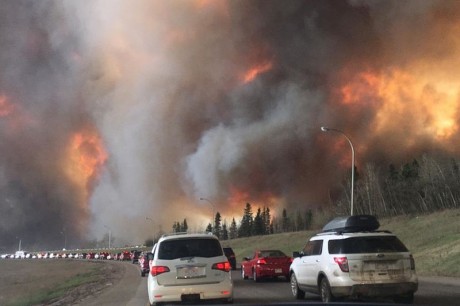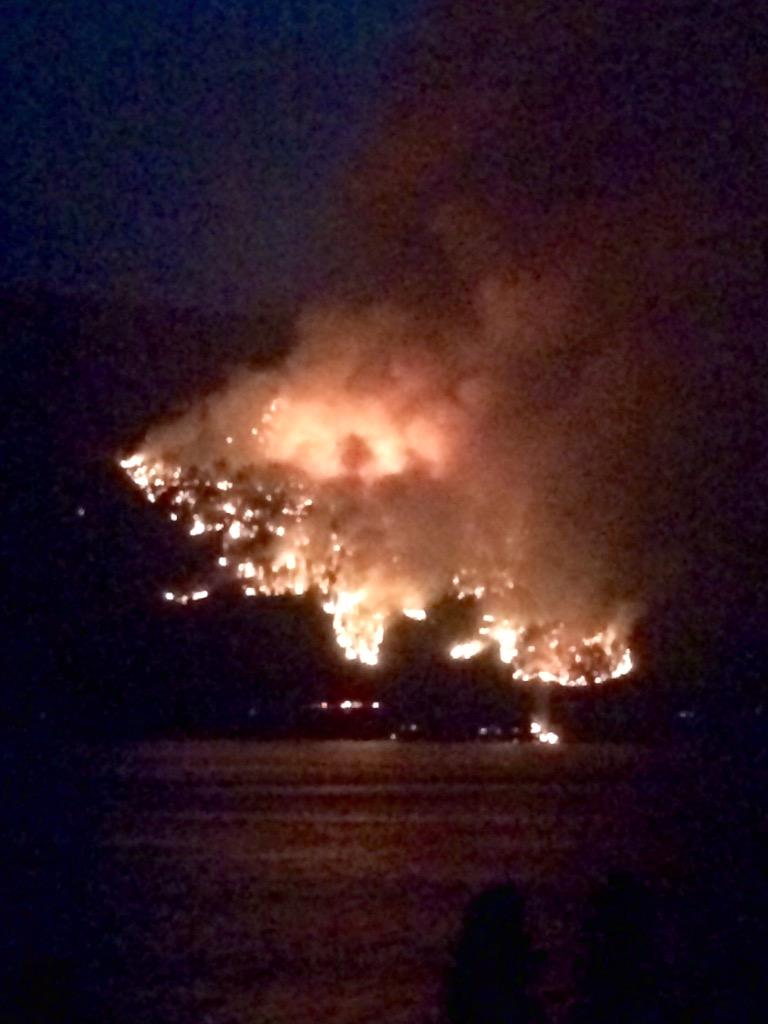A massive wildfire raging through the northern part of Alberta has swelled in size and surged north of Fort McMurray, destroying an evacuated oil sands camp on Tuesday and it is projected to encroach on major facilities shortly.
The flames consumed a 665-room oil-sands work camp north of the city, the Blacksands Executive Lodge, Alberta Premier Rachel Notley said Tuesday. The lodge is owned by Horizon North Logistics Inc. of Calgary.

Image courtesy of Nairaland.com
Officials said Wednesday they expected the fire to move east towards plants owned by Suncor Energy (TSX:SU) and its Syncrude subsidiary, CBC News reports. They added that the operations themselves are unlikely to be damaged by the flames as they are well isolated by wide barriers of cleared firebreak and gravel, and are employing their own firefighting crews.

Image courtesy of Nairaland.com
By 6:00 am local time Wednesday, the fire had grown to approximately 422,898 hectares in size.
“It’s pretty significant growth,” provincial wildfire official Travis Fairweather said in a televised interview with CBC. “We’ve just been seeing really extreme fire conditions over the last couple of days. It’s been really burning intensely and the winds have been carrying it.”
The wildfire, which destroyed whole sections of Fort McMurray earlier this month, is also expected to reach the neighbouring province of Saskatchewan.

Image © Cameron Strandberg | Flickr CC by 2.0
So far, it has forced more than 88,000 people to leave the area, with about 8,000 of them evacuating Monday night as the resurgent fire shifted directions, posing fresh threats to oil sands complexes and worker camps.
…click on the above link to read the rest of the article…










